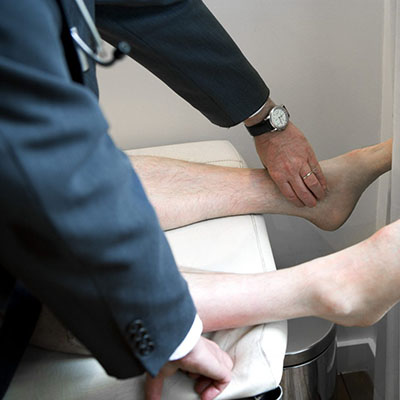Condition - Peripheral Arterial Disease
What Is
a Peripheral Arterial Disease?
PAD is a chronic disease in which plaque builds up in the arteries to the legs. This buildup typically occurs gradually. If allowed to progress, blood flow in that artery can become limited or blocked all together.
PAD is relatively common, affecting more than 10 million people in the U.S. It is more common in people who are 65 or older, but can occur at nearly any age. Smoking; high blood pressure; high cholesterol or triglycerides; diabetes; kidney failure; and obesity increase your risk for PAD.

Symptoms
MAY HIDEMany patients experience no symptoms.
FATIGUE OR CRAMPING OF MUSCLES WHILE WALKINGFatigue or cramping of your muscles (claudication) in the calf, thigh, hip, or buttock may signal you have PADS. Typically the discomfort is felt after walking a certain distance and goes away with rest.
PAIN IN TOES OR FEET WHILE RESTINGIf you have pain in your toes or feet while resting, you may have an advancing case of PAD.
OPEN WOUND OR GANGRENEAn open wound or ulcer on your toes or feet, often at a pressure point on the foot, can signal a serious case of PAD. An ulcer can progress to gangrene. These symptoms require immediate medical attention.
